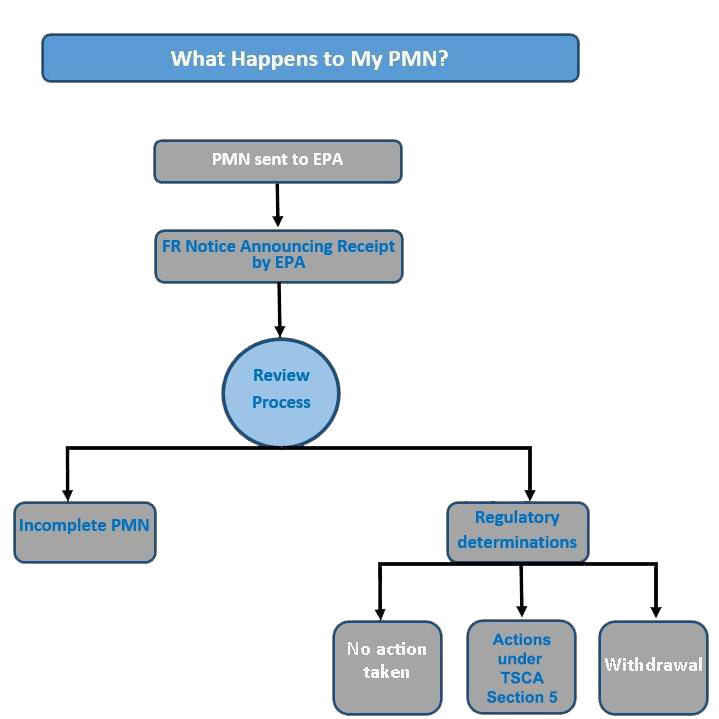EPA's Review Process for New Chemicals
On this page:
- New Chemicals Program meetings and review process
- Changes to EPA’s review of new chemicals due to 2016 TSCA amendments
- Chemical categories used to review new chemicals
- Predictive models and tools for assessing chemicals under TSCA
- New chemicals and pollution prevention efforts
- Policies, frameworks, and guidance
New Chemicals Program meetings and review process
The Premanufacture Notice (PMN) Program to review new chemicals under the Toxic Substances Control Act (TSCA) has evolved into an efficient mechanism for identifying those new chemicals which are of greatest concern early on in the 90-day review process. A detailed analysis is focused on these cases with the ultimate goal of identifying and controlling unreasonable risks. EPA uses an integrated approach that draws on knowledge and experience across disciplinary and organizational lines to identify and evaluate concerns regarding health and environmental effects, exposure and release and economic impacts.
Following receipt of a PMN or exemption notice, EPA scientists and program managers meet to evaluate the notice and the notice undergoes the following steps in the Agency's 90-day review process. View the graphic of the new chemicals review process below.

Chemical categories used to review new chemicals
EPA groups PMN chemicals with shared chemical and toxicological properties into categories in order to streamline the process for Agency review of new chemical substances.
Learn more about the New Chemicals chemical categories.
Predictive models and tools for assessing chemicals under TSCA
EPA has developed assessment methods, databases, and predictive tools to help evaluate what happens to chemicals when they are used and released to the environment and how workers, citizens, and the environment might be exposed to and affected by them. These tools may be helpful when laboratory studies or monitoring data are not available or need to be supplemented.
Learn more about the predictive tools and models used in the New Chemicals Program.
New chemicals and pollution prevention efforts
The New Chemicals Program is actively carrying out EPA's strategy to prevent pollution before it can occur. The New Chemicals Program strongly encourages industry efforts to prevent pollution.
Learn more about these pollution prevention efforts.
Policies, frameworks, and guidance
- Chemistry assistance manual
- Instruction manual for reporting under the New Chemicals Program
- Questions and answers for the New Chemicals Program under TSCA
- Consolidation of PMNs and exemption applications policy
- Exclusions and exemptions from PMN requirements
- Exposure-based policy
- High molecular weight polymers policy
- Incomplete PMNs
- Control of nanoscale materials under TSCA
- New Chemical Exposure Limits
- Persistent Bioaccumulative Toxics policy
- Sustainable Futures
- TSCA Inventory policies
- New Chemicals "Working Approach" Framework
- Points to Consider When Preparing TSCA New Chemical Notifications
